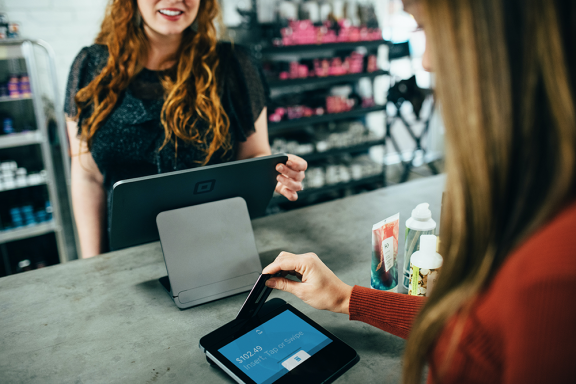
Unified commerce
Working towards an effective digital transition.
In France, more than half of all stores have yet to make the switch to digital. Those that have begun to digitalize their businesses are finding it difficult to see a return on their investment. While small and major retailers continue to close their doors for good due to e-commerce behemoths, it is critical that traditional traders accelerate their transformation to unified commerce. But not under any circumstances or at any cost.
The French have a strong attachment to their local enterprises, whether they be little firms or major corporations. According to a recent Harris Interactive survey done on behalf of Rakuten, 93 percent of respondents polled felt that shops are an important asset in town centers. Although certain models have been effective in reviving town-center or local stores, especially in large cities, other retailers have struggled with the introduction of e-commerce platforms.
The ready-to-wear garment industry has been impacted particularly hard. Forever 21 is the most recent retailer to close its doors. According to statistics compiled by the Economic Observatory of the French Fashion Institute, the value of the garment market has decreased by 14% in the last ten years.
Despite the fact that e-commerce is growing in popularity and marketplaces are becoming more popular for online transactions, only around half of retailers have fully digitized their sales process. Various degrees of success were achieved. Only 3% of shops in the UK saw a return on their digital efforts, according to a 2017 study. Some firms are going digital by opening online stores or creating a specific section on an e-commerce platform, or by installing digital technology in their stores (hotspots, smart touchscreens, and digital cash registers). There's a lot to choose from, and shops who aren't in the business of digital technology can get lost in the shuffle. So let's take a look at the major challenges that retail organizations encounter when it comes to integrating their systems.
Traffic acquisition
FOCUS ON MARKETPLACES AND SOCIAL SHOPPING
Marketplaces are becoming an increasingly important part of the retail landscape. According to the Fédération du E-commerce et de la Vente Distance (FEVAD – Federation of E-commerce and Distance-sellingmost )'s recent barometer poll, they now account for about a third of all online transactions. They've progressed to the point where they can now be used to create internet stores? Traders that only sell goods online via an e-commerce platform are still in the minority (15%), but they recognize the considerable advantage it provides.
Marketplaces offer the best and most cost-effective ranking, whereas organic acquisition would cost thousands of euros. Retailers are increasingly using social media to drive visitors to their websites and in-store locations. Facebook, Instagram, and Pinterest have all reinvented themselves and are now fully functional e-commerce platforms. Retailers can benefit from social selling, and mobile commerce reached a new high in 2018, with 35 percent of sales originating from m-commerce sites.
Act of purschase
MOBILE PAYMENT, PARTICULARLY USEFUL IN TOURIST AREAS
Retail outlets have begun to include digital tools: nearly one out of every two stores now has at least one device. Customers in France, on the other hand, still value face-to-face interactions with salespeople and are uninterested in digital technology. Mobile payment (44 percent), virtual reality (43 percent), and screens for virtually putting on items are among the digital technologies they find most handy (43 percent ). It's worth noting that one out of every two French citizens is skeptical of mobile payments.
This hesitancy contrasts with the widespread use of virtual solutions by American and Asian tourists, who accounted for a sizable share of the 90 million visitors to France in 2018. As a result, some of the largest French shops, such as Galeries Lafayette, BHV, and, more recently, Franprix, have formed relationships with the major Chinese (Alipay, WeChat Pay) and American (Apple Pay) providers of mobile payment systems.
Customer retention
HYPER-PERSONALISATION VS. DATA
According to Accenture Consulting, attracting a new customer costs five times as much as retaining an existing one, whereas a consumer who has signed up for a loyalty program might create 18 percent more income for a retailer.Customers make and continue to make purchases because they are aware of their expectations and because they are hyper-personalized. Sixty-six percent of the French consumers polled said they are more likely to shop at stores that cater to their individual needs. However, 40% of them expressed concern about the fact that technology can now correctly assess and predict their demands.
The Cambridge Analytica scandal exposed a number of incidents of personal data being misused. Since the adoption of the General Data Protection Regulation, regulators have been paying more attention to retailers (GDPR). This means that businesses must make sure that data is used responsibly, primarily to improve the consumer experience and provide hyper-relevant items and services.
Traditional merchants must work towards a successful digital transformation at every level of the purchasing process by putting the client at the center of their strategy. Shops may ensure that they deliver concrete benefits for customers and obtain a return on their investments by considering uses and experiences.
